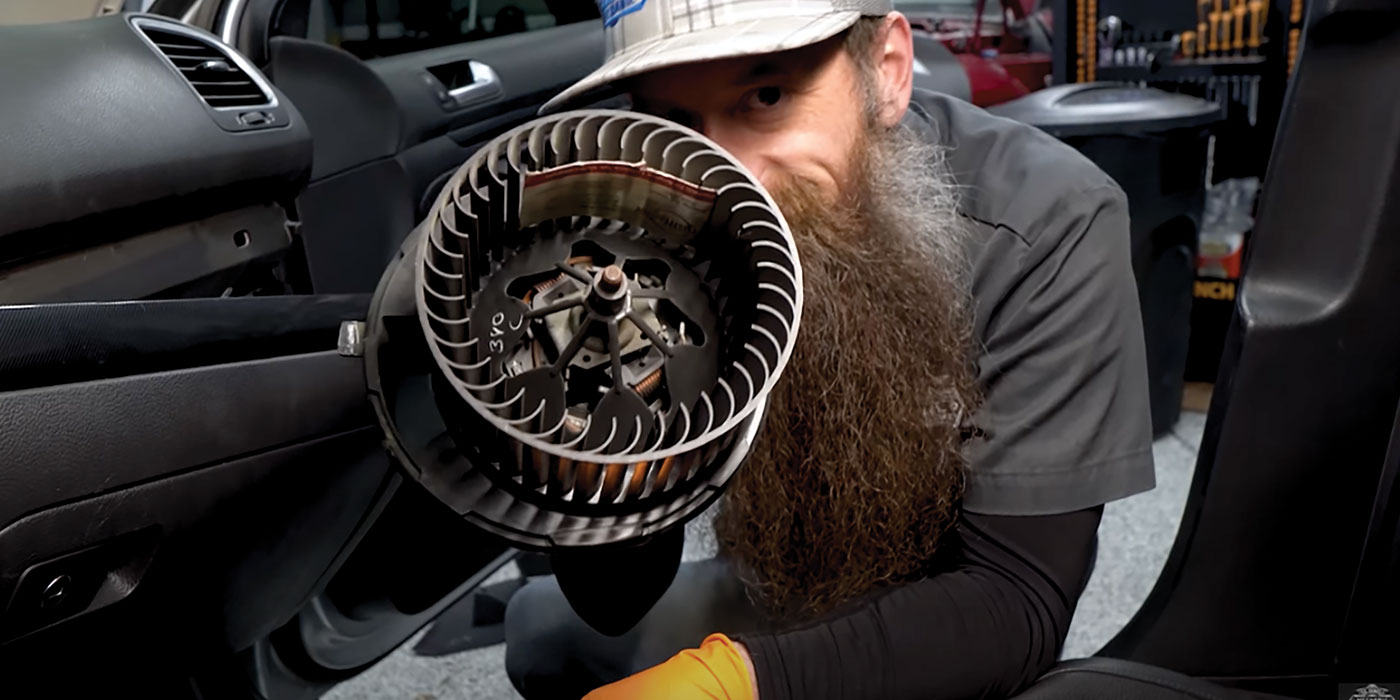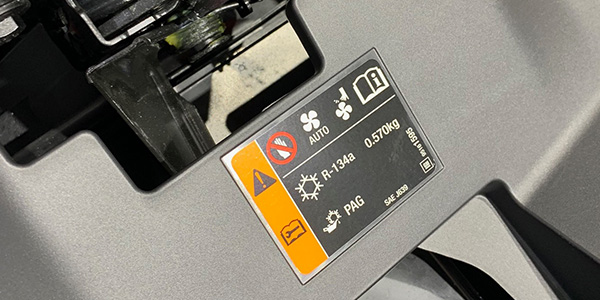The ignition key cylinder on the Ford Focus is a common leak point, especially when the vehicle has racked up enough miles to get out of warranty. Over time, the tumblers wear out causing them to not completely retract resulting in a key cylinder that won’t turn. Of course, this is seldom without warning. Usually the vehicle owner will notice that the key is stiff to turn, or even he/she has to wiggle and tap on the key to make it work. Some of these people will seek repair when they can still start the car, but many wait until it has to be towed before they do anything about it.
If you purchase the new key cylinder from the dealer, it will come in pieces and have to be assembled. But don’t go thinking you have to be an expert locksmith to fix this vehicle. The key cylinder in these models is really Ford’s easiest cylinder to put together, and probably one of the easiest in the industry. You just need good eyes, steady fingers and a wind-free work area.
You should also read Ford TSB 05-21-17. This bulletin is about dealing with this condition when the key cylinder is at fault. You need to first determine if the cylinder doesn’t turn due to a faulty cylinder or if the shift interlock inside the ignition switch has the cylinder locked. It’s common for the interlock switch in the floor mount shifter of an automatic transmission to fail and cause the cylinder to not turn. Also, the Ford service manual outlines a slightly different method to remove the key cylinder when it doesn’t rotate. It shows where to drill the face of the cylinder to make the cylinder turn. Review that method as well and determine which is best for you.
Make Way!
 Before we can get the new cylinder in, obviously we have to get the old one out. On Fords, there is usually a lock pin that you depress after the key is rotated to the “on” position. Easy enough if the cylinder will turn, but in this case it’s here because it won’t turn… now what? Don’t panic, and put away that slide hammer! Most of the time, these Focus cylinders will turn if you give them a little ball peen massage treatment. Using a punch, give the out housing of the key cylinder a bump from a small hammer as seen in Photo 1.
Before we can get the new cylinder in, obviously we have to get the old one out. On Fords, there is usually a lock pin that you depress after the key is rotated to the “on” position. Easy enough if the cylinder will turn, but in this case it’s here because it won’t turn… now what? Don’t panic, and put away that slide hammer! Most of the time, these Focus cylinders will turn if you give them a little ball peen massage treatment. Using a punch, give the out housing of the key cylinder a bump from a small hammer as seen in Photo 1.
 Usually, this will shake things up enough to allow the cylinder to turn for you so that you can press the release pin. If it refuses to turn, more drastic measures will be needed. There are some tools on the market just for removal of these cylinders when they refuse to turn. If you find that your shop is encountering a lot of these vehicle complaints, it would be a good idea to purchase the tool. Fortunately, in the vehicles I’ve encountered, the steering wheels were already turned into a position that allowed for access to the air bag bolts. For safety, follow the air bag power-down procedure in the service manual before doing this.
Usually, this will shake things up enough to allow the cylinder to turn for you so that you can press the release pin. If it refuses to turn, more drastic measures will be needed. There are some tools on the market just for removal of these cylinders when they refuse to turn. If you find that your shop is encountering a lot of these vehicle complaints, it would be a good idea to purchase the tool. Fortunately, in the vehicles I’ve encountered, the steering wheels were already turned into a position that allowed for access to the air bag bolts. For safety, follow the air bag power-down procedure in the service manual before doing this.

Remove the column shrouding by removing the T-20 Torx screws.
See Photo 2.
Remove the air bag by removing the two 5.5 mm or 7/32 head screws.
See Photo 3.
Be mindful of the wiring to the air bag. Don’t remove the air bag off the wheel too far, or you may damage the bag and the clock spring. Remove the air bag wiring connector from out of the clock spring. See Photo 4.

Remove the steering wheel by removing the 24 mm head bolt, also seen in Photo 4. No puller is needed. Note the position of the steering wheel since there is no master spline. Also note the position of the clock spring and be careful not to let the clock spring rotate so it doesn’t lose its center.
Remove the yellow plastic collar seen in Photo 5 or it will likely get lost if it falls out on its own.

If the vehicle is equipped with PATS, which it most likely will be, (see Photo 6) remove the PATS transceiver for its protection by removing the single T-20 torx screw holding it in.
Now that access to the release pin is completely free and clear (Photo 7), we can operate. Note: If you were lucky enough to get the cylinder to rotate earlier, then the picture is showing the pin that needs to be pressed to release the cylinder. If the cylinder will turn, then there is no need to remove the steering wheel or the PATS transceiver.

With a high quality drill bit and a steady hand, drill the lock pin. I suggest starting with a very tiny bit to make a pilot hole in the pin first to prevent the larger bit from walking off of the pin. Minor reaming of the hole in the aluminum cylinder housing will not cause a problem with the cylinder, but too much will allow the new cylinder to move laterally in the housing. After the lock pin is drilled away, the cylinder will be allowed to move part way out and stop again. You will need some Vise Grip or  Channellock pliers for a better grip because it will be resistant. See Photo 8.
Channellock pliers for a better grip because it will be resistant. See Photo 8.
At the rear of the cylinder is a snap ring that will have to give way before the cylinder will come out. Usually, the snap ring pops off the back of the cylinder during this process, some times it just distorts enough to pass through the maze inside the housing that has it trapped. See Photo 9.
 Building the New Cylinder
Building the New Cylinder
OK, one way or another, we got the cylinder out. Now, the new one is in pieces; what now?
First, we need to organize the work area, preferably somewhere inside at a desk. The tumblers come in little bags and are grouped. There are five depths of tumblers that number 1 through 5. The numbers on the tumblers are the depth of the cut on the key. The higher the number, the deeper the cut.
Use a depth gauge to determine key cut depth with. Photo 10 shows the tool being used. It indicates a certain cut is a #4.
 Like many “special tools,” there is a way around this one too. You can have the dealer cut a cheap non-PATS key blank into each of the five depths for you as a guide. I use a 10 cut key that is cut at each depth twice. In other words, 1-1, 2-2, 3-3, 4-4, 5-5. Then, you can hold your new “depth gauge” key beside the original key as a reference point for each cut. If the original key is worn, have the dealer cut a new key for you when you call to get the cylinder kit. Using a badly worn key may cause damage to the new cylinder. Map out the depth and position of each cut and place your tumblers out in order.
Like many “special tools,” there is a way around this one too. You can have the dealer cut a cheap non-PATS key blank into each of the five depths for you as a guide. I use a 10 cut key that is cut at each depth twice. In other words, 1-1, 2-2, 3-3, 4-4, 5-5. Then, you can hold your new “depth gauge” key beside the original key as a reference point for each cut. If the original key is worn, have the dealer cut a new key for you when you call to get the cylinder kit. Using a badly worn key may cause damage to the new cylinder. Map out the depth and position of each cut and place your tumblers out in order.
 From left to right in Photo 11, you can see the tumblers are laid out in order of cuts. In this case, it is 3-4-2-4-4-2-1.
From left to right in Photo 11, you can see the tumblers are laid out in order of cuts. In this case, it is 3-4-2-4-4-2-1.
For this key, there will be the seven tumblers for each of the seven cuts. They will be loaded into the seven slots in the cylinder. Four of them load from one direction, and three load from the other. See Photo 12.
 There will also be a bag containing some tiny little springs. These go under the tumblers. You can lose one and still be OK since they give you an extra one. See Photo 13.
There will also be a bag containing some tiny little springs. These go under the tumblers. You can lose one and still be OK since they give you an extra one. See Photo 13.
Install the springs and tumblers in order as you have them. See Photo 14.
Then, insert the key to test the depths. Inspect to make sure that all tumblers retract flush with the cylinder. See Photo 15. Then lubricate the tumblers with the supplied lithium grease.
 Insert the assembly into the outer housing of the cylinder. You’ll need to gently tuck the tumblers in with a small pick or pocket screwdriver one at a time. You can’t use the key because the key can’t be removed in this position, since this is the “on” position and you’ll need the key out of the way for the next piece. See Photo 16.
Insert the assembly into the outer housing of the cylinder. You’ll need to gently tuck the tumblers in with a small pick or pocket screwdriver one at a time. You can’t use the key because the key can’t be removed in this position, since this is the “on” position and you’ll need the key out of the way for the next piece. See Photo 16.
Almost done…
 Install the opening of the cylinder into the housing (Photo 17).
Install the opening of the cylinder into the housing (Photo 17).
Place the sleeve over the opening, and crimp it (Photos 18 and 19).
Place the new snap ring onto the back of the cylinder (Photo 20).
Your new cylinder is ready to be inserted into the column. To install the cylinder, first use a flat  screwdriver inside the empty column housing to rotate everything to the on/run position (not crank). Then insert the key into the new cylinder and rotate it to the on/run position. Slide the cylinder into the column until the lock pin clicks into the hole. If you’re still using the original key, or the customer’s spare key, then no PATS programming will be needed. If you’re replacing the key, then the system will need to be programmed to accept the new key. In the past, this meant that the dealer-level scan tool was the
screwdriver inside the empty column housing to rotate everything to the on/run position (not crank). Then insert the key into the new cylinder and rotate it to the on/run position. Slide the cylinder into the column until the lock pin clicks into the hole. If you’re still using the original key, or the customer’s spare key, then no PATS programming will be needed. If you’re replacing the key, then the system will need to be programmed to accept the new key. In the past, this meant that the dealer-level scan tool was the  only option. Today, alternative scan tool makers are stepping up to meet this demand, and other companies also are making dedicated key programming tools that are a favorite among locksmiths.
only option. Today, alternative scan tool makers are stepping up to meet this demand, and other companies also are making dedicated key programming tools that are a favorite among locksmiths.
Hopefully, this will now be one less service that you’ll lose to the dealer or locksmith. I hope you have enjoyed the information and have the opportunity to profit from it soon.
 |
 |
 |
 |
 |







